 Astronomy and numerical software source codes by Stephen L. Moshier. aa-55.zip Self contained Ephemeris Calculator.
Astronomy and numerical software source codes by Stephen L. Moshier. aa-55.zip Self contained Ephemeris Calculator.
 °
°
moshier
 Astronomy and numerical software source codes by Stephen L. Moshier. aa-55.zip Self contained Ephemeris Calculator.
Astronomy and numerical software source codes by Stephen L. Moshier. aa-55.zip Self contained Ephemeris Calculator.
analemma
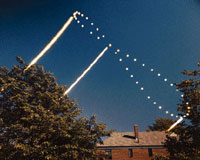
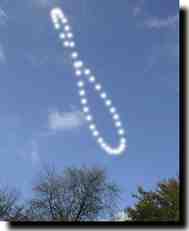
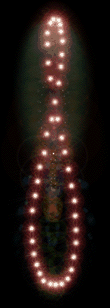
The Analemma is the key to astronomical and solar tracking mathematics.
sixtysymbols
 A nice description and video of the Analemma from the guys at Sixty Symbols.
A nice description and video of the Analemma from the guys at Sixty Symbols.
ayiomamitis
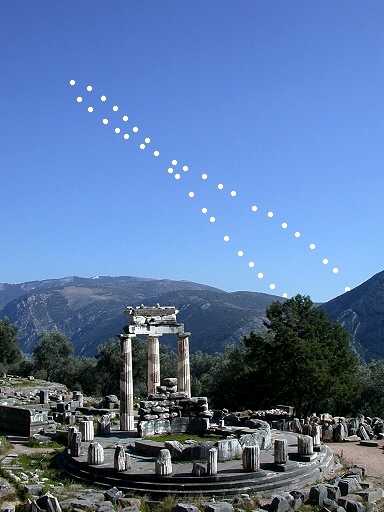 Strange as it may seem, only seven times has someone ever managed to successfully image the solar analemma as a multi-exposure on a single piece of film. Anthony's are very beautiful.
Strange as it may seem, only seven times has someone ever managed to successfully image the solar analemma as a multi-exposure on a single piece of film. Anthony's are very beautiful.
greatcircle
 Great Circle Studio's Solar Calculator.
Great Circle Studio's Solar Calculator.
 Jean Meeus' great book on astronomical calculations.
Jean Meeus' great book on astronomical calculations.
 How to calculate alt/az of sun for any time/location - Do It Yourself.
How to calculate alt/az of sun for any time/location - Do It Yourself.
Accurate to about 1/10th of a degree.
 How to calculate alt/az of sun for any time/location - Easier Way.
How to calculate alt/az of sun for any time/location - Easier Way.
schlyter
 Computing planetary positions - a tutorial with worked examples.
Computing planetary positions - a tutorial with worked examples.
By Paul Schlyter, Stockholm, Sweden
 Pages From A Dialist's Notebook.
Pages From A Dialist's Notebook.
An Indoor Analemma
Chart of the Equation of Time
digi
 A digital sundial
A digital sundial
green
checksun susdesign blackberry pathfinder solardat nrel iesmith I have arranged the order of these books with the most desirable at the top.
Astronomy With Your Personal Computer Astronomical Formulae for Calculators Practical Astronomy with Your Calculator Easy PC Astronomy heavensabove bartels solpos axel mowcius cerebral psa burnett refraction
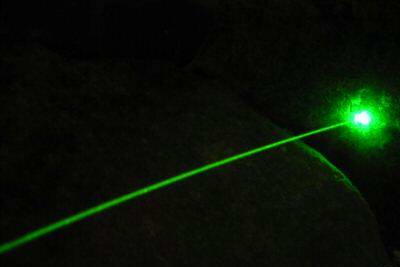
Cool green lasers can be gotten here.
 Richard D. Swensen's Sundial at the University of Wisconsin River Falls.
Richard D. Swensen's Sundial at the University of Wisconsin River Falls.
 NOAA Surface Radiation Research Branch Solar Position Calculator
NOAA Surface Radiation Research Branch Solar Position Calculator
 Definitions of Astronomical Terms.
Definitions of Astronomical Terms.
 solar.bas By Michael A. Syczylo
solar.bas By Michael A. Syczylo
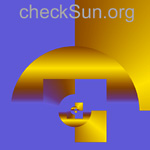 checkSun.
checkSun.
Spectrum
Galileo/GPS controlled Solar Tracking
Freeware/GPL context
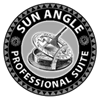 Sustainable By Design
Sustainable By Design
provides a suite of shareware design tools on sustainable energy topics including solar position and path diagrams.
 HelioStat for BlackBerry Smartphones
HelioStat for BlackBerry Smartphones
Find sunrise, sunset, moonrise, moonset and the location of the sun for any time and date.
This program runs in a Blackberry and can, among other info, display the current AZimuth and ALTitude of the sun.
$6.99us
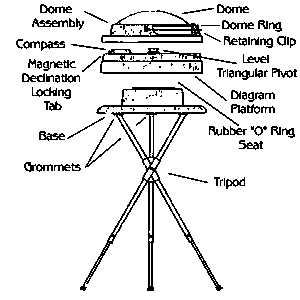 The Solar Pathfinder.
The Solar Pathfinder.
 Sun chart program. Generates sun path diagrams in PDF format.
Sun chart program. Generates sun path diagrams in PDF format.
 Solar Position Algorithm for Solar Radiation Applications
Solar Position Algorithm for Solar Radiation Applications
NREL has published this document to help designers of solar concentrator develop software to track the sun in high resolution.
 Solar Calculator 2.0
Solar Calculator 2.0
The Solar Calculator can be a very useful tool for a photographer. It gives an easy to read graphical indication of the position of the sun and moon at both rise and set, as well as their current positions in the sky, and it can do this for just about any location on any time and date you wish.
books
Books.
by Peter Duffett-Smith
Edition Desc: 2nd ed
Published 1990
ISBN 0 521 38093 6 hardback $74.95
ISBN 0 521 38995 X Paperback $30.95
 Get the out of print book here.
Get the out of print book here.
The software in this book is based written in Microsoft's GW Basic. The equations are very extensive.
BTW you want the second edition because it has more routines than the 1st.
I would recommend obtaining a copy of this book before all others. His method of presenting the equations and the resultant programs is masterful. One can take his programs and easily modify them for special uses. This book is required reading for those who are writing astronomical software. Even if you are writing low accuracy algorithms, such as for solar tracking, his programs will give you a benchmark to compare the results.
 Download the software from here.
Download the software from here.
This is a self extracting compressed file. Put it in a separate directory and run it.
by Jean H. Meeus
Edition Desc: 4th ed
Published 1988
ISBN 0 943 39622 0 Paperback $22.75
 Get the out of print book here.
Get the out of print book here.
If I had no other books, this is the one to have. Meeus is recognized as the authority on astronomical calculations. Others always refer to him for reference.
by Peter Duffett-Smith
Edition Desc: 3rd ed
Published 1988
ISBN 0 521 35629 6 hardback $54.95us
 Get the out of print book here.
Get the out of print book here.
The third edition of a guide book for amateur astronomers features new sections on generalized coordinate transformations, nutations, aberration, and selenographic coordinates as well as improvements to the sunrise and moonrise calculations.
by Peter Duffett-Smith
Edition Desc: book & disk
Published 1996
ISBN 0 521 56052 7 Paperback $30.95
 Get the book here.
Get the book here.
Easy PC Astronomy is the book for all those who want to make astronomical calculations easily and accurately. A simple but powerful script language called AstroScript is provided on a disk with the book, ready to use on any IBM PC-type computer.
I don't have this book myself, but it sounds good.
 Welcome to Heavens-Above.
Welcome to Heavens-Above.
If you're interested in satellites or astronomy, you've come to the right place! Our aim is to provide you with all the information you need to observe satellites such as the International Space Station and the Space Shuttle, spectacular events such as the dazzlingly bright flares from Iridium satellites as well as a wealth of other spaceflight and astronomical information.
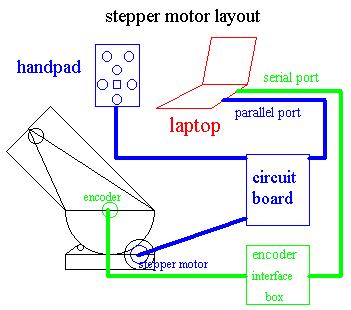 Computer Operated Telescopes
Computer Operated Telescopes
By Mel Bartels
 Solar Position and Intensity
Solar Position and Intensity
NREL's SOLPOS 2.0
Source code written in "C"
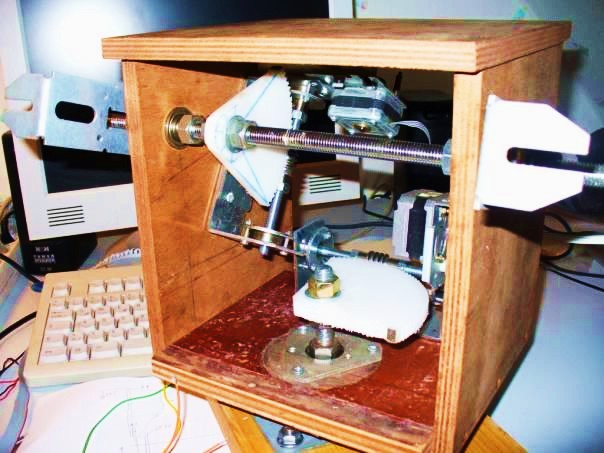 * Axel's Helioworm Heliostat.
* Axel's Helioworm Heliostat.
Helioworm - DIY Heliostat drive with self made worm gear.
The worm gear wheel is made from the white plastic of a cutting board.
The stepper motors and the gears are taken from an old printer.
All moving parts and the control electronics are located in the housing and are the weather proof.
The control unit is based on an Atmel Mega168 micro controller.
Electronic board and control program.
 the ramblings of mowcius
the ramblings of mowcius
sun tracker code
mowcius has written a program to drive a heliostat using stepper motors. Source code written in "C" for the Pololu Arduino.
 Cerebral Meltdown
Cerebral Meltdown
Arduino Sun Tracking / Heliostat Electronics Control System
This guy has written a program to drive a heliostat using stepper motors. Source code written in "C" for the Pololu Arduino.
 PSA Algorithm Files
PSA Algorithm Files
Arduino Sun Tracking / Heliostat Electronics Control System
Spanish open source sun position code for a heliostat. Source code written in "C++" for the Pololu Arduino.
Happylab wiki.
// SunPos.h
// This file is available in electronic form at http://www.psa.es/sdg/sunpos.htm
#ifndef __SUNPOS_H
#define __SUNPOS_H
// Declaration of some constants
#define pi 3.14159265358979323846
#define twopi (2*pi)
#define rad (pi/180)
#define dEarthMeanRadius 6371.01 // In km
#define dAstronomicalUnit 149597890 // In km
struct cTime
{
int iYear;
int iMonth;
int iDay;
double dHours;
double dMinutes;
double dSeconds;
};
struct cLocation
{
double dLongitude;
double dLatitude;
};
struct cSunCoordinates
{
double dZenithAngle;
double dAzimuth;
};
void sunpos(cTime udtTime, cLocation udtLocation, cSunCoordinates *udtSunCoordinates);
#endif
// SunPos.cpp
// This file is available in electronic form at http://www.psa.es/sdg/sunpos.htm
#include "sunpos.h"
#include
 Position of the Sun
Position of the Sun
By Keith Burnett
Accurate to about 1/40th of a degree.
OK, this site no longer exists.
http://www.stargazing.net/kepler/sun.html
 I have placed a version of Keith's program that corrects for atmospheric refraction along with Stephen Moshier's program into a .zip file. In addition there are some handling programs to compare the results. Unzip into a separate directory. Read the ReadMe.txt file for instructions.
I have placed a version of Keith's program that corrects for atmospheric refraction along with Stephen Moshier's program into a .zip file. In addition there are some handling programs to compare the results. Unzip into a separate directory. Read the ReadMe.txt file for instructions.
'*********************************************************
' This program will calculate the position of the Sun
' using a low precision method found on page C24 of the
' 1996 Astronomical Almanac.
'
' The method is good to 0.01 degrees in the sky over the
' period 1950 to 2050.
'
' QBASIC program by Keith Burnett (http://bodmas.org/kepler/sun.html)
'
' Work in double precision and define some constants
'
DEFDBL A-Z
pr1$ = "\ \#####.##"
pr2$ = "\ \#####.#####"
pr3$ = "\ \#####.###"
pi = 4 * ATN(1)
tpi = 2 * pi
twopi = tpi
degs = 180 / pi
rads = pi / 180
'
' Get the days to J2000
' h is UT in decimal hours
' FNday only works between 1901 to 2099 - see Meeus chapter 7
'
DEF FNday (y,m,d,h) = 367 * y - 7 * (y + (m + 9) \ 12) \ 4 + 275 * m\ 9 + d - 730531.5 + h / 24
'
' define some arc cos and arc sin functions and
' a modified inverse tangent function
'
DEF FNacos (x)
s = SQR(1 - x * x)
FNacos = ATN(s / x)
END DEF
DEF FNasin (x)
c = SQR(1 - x * x)
FNasin = ATN(x / c)
END DEF
'
' the atn2 function below returns an angle in the
' range 0 to two pidepending on the signs of x and y.
'
DEF FNatn2 (y, x)
a = ATN(y / x)
IF x < 0 THEN a = a + pi
IF (y < 0) AND (x > 0) THEN a = a + tpi
FNatn2 = a
END DEF
'
' the function below returns the true integer part,
' even for negative numbers
'
DEF FNipart (x) = SGN(x) * INT(ABS(x))
'
' the function below returns an angle in the range
' 0 to two pi
'
DEF FNrange (x)
b = x / tpi
a = tpi * (b - FNipart(b))
IF a < 0 THEN a = tpi + a
FNrange = a
END DEF
'
' Find the ecliptic longitude of the Sun
'
DEF FNsun (d)
'
' mean longitude of the Sun
'
L = FNrange(280.461 * rads + .9856474# * rads * d)
'
' mean anomaly of the Sun
'
g = FNrange(357.528 * rads + .9856003# * rads * d)
'
' Ecliptic longitude of the Sun
'
FNsun = FNrange(L + 1.915 * rads * SIN(g) + .02 * rads * SIN(2 * g))
'
' Ecliptic latitude is assumed to be zero by definition
'
END DEF
'
'
'
CLS
'
' get the date and time from the user
'
' INPUT " year : ", y
' INPUT " month : ", m
' INPUT " day : ", day
' INPUT "hour UT : ", h
' INPUT " minute : ", mins
' INPUT " lat : ", glat
' INPUT " long : ", glong
y = 2002
m = 7
day = 9
h = 0
mins = 23
glat = 45.08096
glong = -93.02377
glat = glat * rads
glong = glong * rads
h = h + mins / 60
d = FNday(y, m, day, h)
'
' Use FNsun to find the ecliptic longitude of the
' Sun
'
lambda = FNsun(d)
'
' Obliquity of the ecliptic
'
obliq = 23.439 * rads - .0000004# * rads * d
'
' Find the RA and DEC of the Sun
'
alpha = FNatn2(COS(obliq) * SIN(lambda), COS(lambda))
delta = FNasin(SIN(obliq) * SIN(lambda))
'
' Find the Earth - Sun distance
'
r = 1.00014 - .01671 * COS(g) - .00014 * COS(2 * g)
'
' Find the Equation of Time
'
equation = (L - alpha) * degs * 4
'
' find the Alt and Az of the Sun for a given position
' on Earth
'
' hour angle of Sun
LMST = FNrange((280.46061837# + 360.98564736629# * d) * rads + glong)
hasun = FNrange(LMST - alpha)
'
' conversion from hour angle and dec to Alt Az
sinalt = SIN(delta) * SIN(glat) + COS(delta) * COS(glat) * COS(hasun)
altsun = FNasin(sinalt)
' y = -COS(delta) * COS(glat) * SIN(hasun)
alt = -COS(delta) * COS(glat) * SIN(hasun)
' x = SIN(delta) - SIN(glat) * sinalt
az = SIN(delta) - SIN(glat) * sinalt
' azsun = FNatn2(y, x)
azsun = FNatn2(alt, az)
'
' print results in decimal form
'
PRINT
PRINT "Position of Sun"
PRINT "==============="
PRINT
PRINT USING pr2$; " year : "; y
PRINT USING pr2$; " month : "; m
PRINT USING pr2$; " days : "; day
PRINT USING pr2$; " hour : "; h - mins / 60
PRINT USING pr2$; " min : "; mins
PRINT USING pr1$; "longitude : "; lambda * degs
PRINT USING pr3$; " RA : "; alpha * degs / 15
PRINT USING pr1$; " DEC : "; delta * degs
PRINT USING pr2$; " distance : "; r
PRINT USING pr1$; " eq time : "; equation
PRINT USING pr1$; " LST : "; FNrange(LMST) * degs
PRINT USING pr1$; " azimuth : "; azsun * degs
PRINT USING pr1$; " altitude : "; altsun * degs
END
'*********************************************************
' Below is the output from the old program when run for
' 11:00 UT on 1997 August 7.
' year : 2002
' month : 8
' day : 7
' hour UT : 11
' minute : 0
' Position of Sun
' ===============
' days : -877.04167
' longitude : 134.98
' RA : 9.163
' DEC : 16.34
' distance : 1.01408
' eq time : -5.75
' Below is the output from the program including Altitude and Azimuth
' in Chicago, run for 15:00 UT on 2001 March 4th (09:00h Chicago time),
' compared with the altitude and azimuth calculated from
' Chris Marriott's SkyMap Pro 6 demo.
' year : 2001
' month : 3
' day : 4
' hour UT : 15
' minute : 30
' lat : 41.87
' long : -87.64
' Position of Sun
' ===============
' days : 428.14583
' longitude : 344.13
' RA : 23.025
' DEC : -6.24
' distance : 0.99173
' eq time : -11.68
' azimuth : 134.56
' altitude : 30.68
' Skymap 6
' --------
' Right ascension: 23h 1m 29.93s = 23.025
' Declination: -6° 14' 58.0" = -6.249
' Altitude: 30° 42' 20" = 30.706
' Azimuth: 134° 33' 41" = 134.561
' The errors here are about 1.5 arcmin for altitude and much less for
' Azimuth. Errors are higher than for the RA and Dec and this may be
' due to the failure to allow for the TDT-UT time difference in the
' method given here. To put this all in perspective, the Sun moves
' about 0.25 of a degree in the sky between 0900 and 0901 that morning!
<redrok@redrok.com>